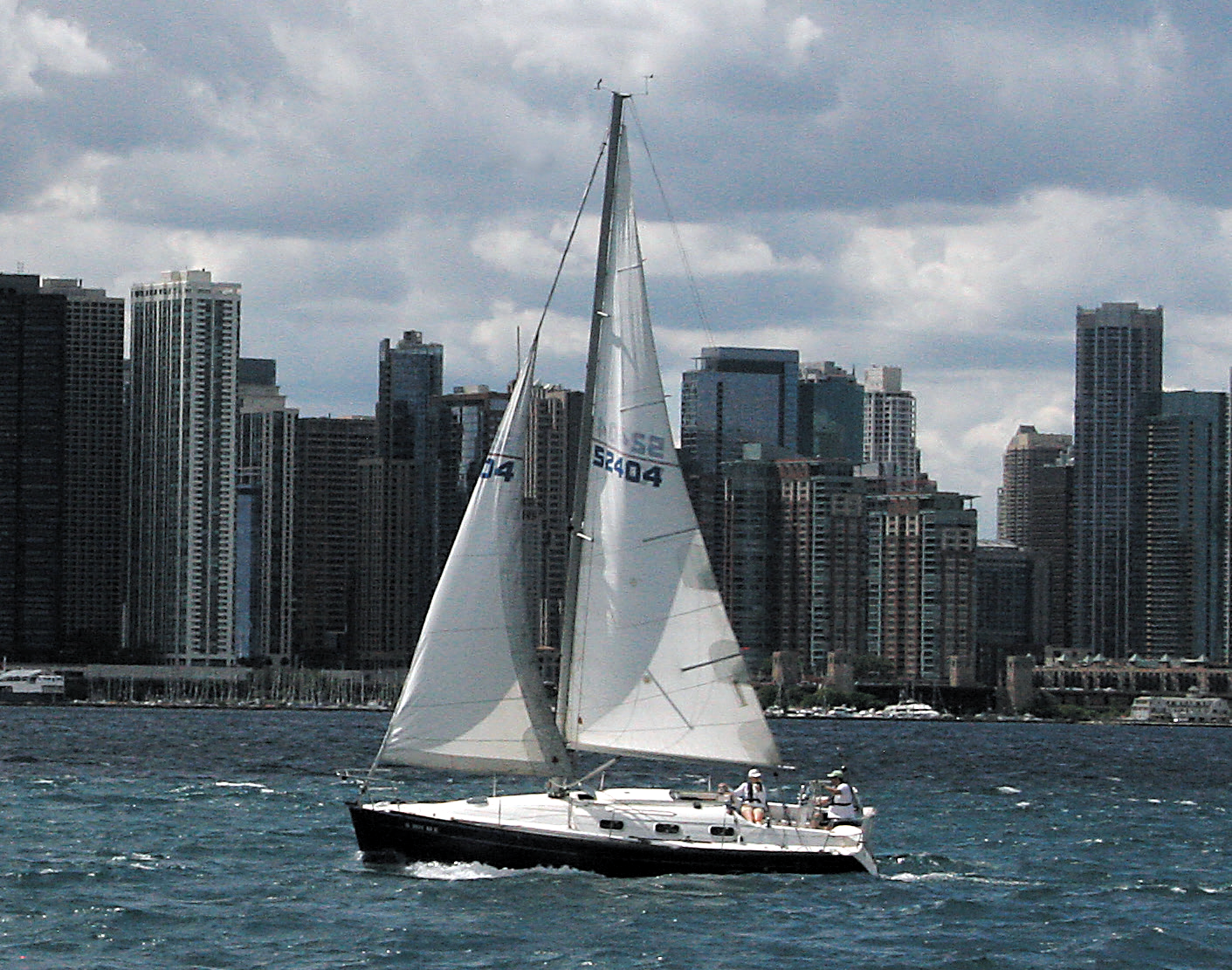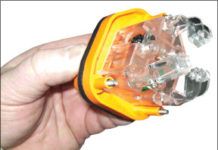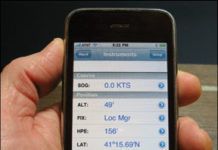PS Advisor: Thermal-Imaging vs. Radar
Practical Sailor tested the FLIR system (www.flir.com) in the June 2008 issue, and we tried out the company’s new First Mate recently (look for that report in an upcoming issue). While the FLIR images are impressive and offer some information not available with radar or even night-vision gear, infrared thermal imaging is no replacement for radar. FLIR bases its readings on thermal contrast, and objects that are the same temperature as their surroundings remain invisible. Take for example, a steel buoy or granite ledge that’s the same temperature as the sea surface at night. Another drawback: FLIR doesn’t offer any range or bearing information.
Are Mildew Preventers the Best Defense?
In January 2009, Practical Sailor tested 14 mold and mildew cleaners, and two household products stood out: the super-chlorinated Klean-Strip Mildew Stain Remover and Spray Nine, a chlorine-free household cleaner. After that test, several readers asked about products to prevent mold. One product in particular, Concrobium Mold Control, was repeatedly suggested for testing. We found Concrobium at Home Depot, and to make things interesting, we included two other mildew preventers that readers suggested: 3M Marine Mildew Block, a treatment formulated to follow the 3M Mildew Cleaner tested in January, and Mold Off, a product billed as an eco-friendly commercial-grade cleaner and protectant.
Backyard Boatbuilding: A Father-Son Odyssey
For many sailors, boatbuilding can be the ultimate do-it-yourself project. The skills derived pay off as extra dividends when it comes to repairs or fitting out projects aboard larger sailboats. And as Matt Zephry and his 12-year-old son Alex found out, sharing the boatbuilding process with a loved one is like passing along an important piece of family history. The father-son duo began their boatbuilding project without any plans. Their intention was to create a boat that was easy to row and could double as a sailing skiff for father-and-son fishing trips. Their dream boat-and first boatbuilding project-was a success, and the Z&S team launched Odyssey in time for a Fathers Day sail.
SmartPlug: Safer Power
According to multiple reports, most AC electrical fires occur at the boats shorepower inlet. To address this and other shortcomings of the standard twist-type boatside connection, SmartPlug Systems developed a new AC shorepower system that the company hopes will become the new marine standard. Loose and corroded connections are most often the culprits when overheating occurs. Corrosion typically results when moisture gets in at the plug-inlet connection, while arcing-which in turn leads to pitting, scorching, and heat build-up-is partially due to the shape and small contact area of the connector pins.
What is the Best Way to Stay Hydrated at Sea?
As the summer heats up, we were reminded that staying hydrated and healthy is as essential to a safe sail or a successful race as having the right gear on board. Dehydration occurs when the amount of water leaving the body is greater than the amount being taken in. It can rob muscles of strength and can fog the mind, compromising a sailors boat-handling ability and capacity to make tactical decisions. It can also lead to seasickness, or be a result of mal de mer. Its easy to prevent: Just be sure to get enough of the right kind of fluids before, during, and after sailing. But what are the right fluids? With the advice of a dietitian from New York Presbyterian-Weill Cornell Medical Center, Practical Sailor weighed the pros and cons-from a sailors standpoint-of various beverages marketed for athletes, including plain old water, coconut water, vitamin-enriched water, and sports drinks.
Inflatable Boat Coatings Long-term Test Launched
Topside paints for inflatable boats, in general, have a poor reputation for durability. Practical Sailor checked out a selection of coatings for Hypalon and PVC fabrics to see which one would best stand up to the tests of time on the water-and under the sun. Testers coated PVC and Hypalon panels with dinghy paints from MDR-Amazon, Synergy Research Corp. (Tuff Coat), Inland Marine, Polymarine (Flexithane and Superflex), and Flexdel Corp. (Flexabar Buoy Coating).
Shedding Light on Safety
A recent ocean race-aboard a Cape Dory 25 sans lifelines in 30- to 40-knot winds and 5- to 10-foot seas-presented a good opportunity to sea-trial Wichards LyfSafe jackline kit. Wichard Inc., which is based in France and has an office in Vermont, has been making marine hardware and accessories for more than 30 years. Its LyfSafe kit offers a ready-to-go jackline setup and comes with everything needed to install the system.
Seascoopa Man-Overboard Recovery Gear Tested Against Lifesling2
Practical Sailor tests the Seascoopa man-overboard device and compares it to our top pick in the previous man-overboard device test, the horseshoe buoy Lifesling2. Seascoopa solves many of the problems of other parbuckle-type devices in that it is compact, lightweight and has an interlocking three-piece carbon-fiber whisker pole that holds the trapezoid-shaped net out at right angles to the boat. The ultimate goal of the device is to make it possible for a single person to safely secure and lift a much heavier person aboard with minimal effort. In addition to reducing the risks associated with a vertical lift, the Seascoopa aims to simplify making contact with the victim. Because it can be employed while the vessel is slowly making way, the recovery involves less stationary bobbing, when the boat is at the mercy of wind and waves.
Mailport: May 2010
Letters to the editor in May 2010 included topics: lightning, tsunami warnings, MOB retrieval and cam cleats.
Testing Navigation Applications for the iPhone
After testing navigation applications for Windows-based smartphones and PDAs, Practical Sailor focuses on three apps available for the iPhone. iNavx, Memory-Map, and Navionics can each be downloaded for a reasonable price and used as backup to primary navigational aids such as a chartplotter or handheld GPS. Cellphone-based programs are not recommended as a standalone approach to navigation, but the iPhone apps are a great way to investigate, plan routes, and set and send waypoints at a very low cost for cartography.



















































